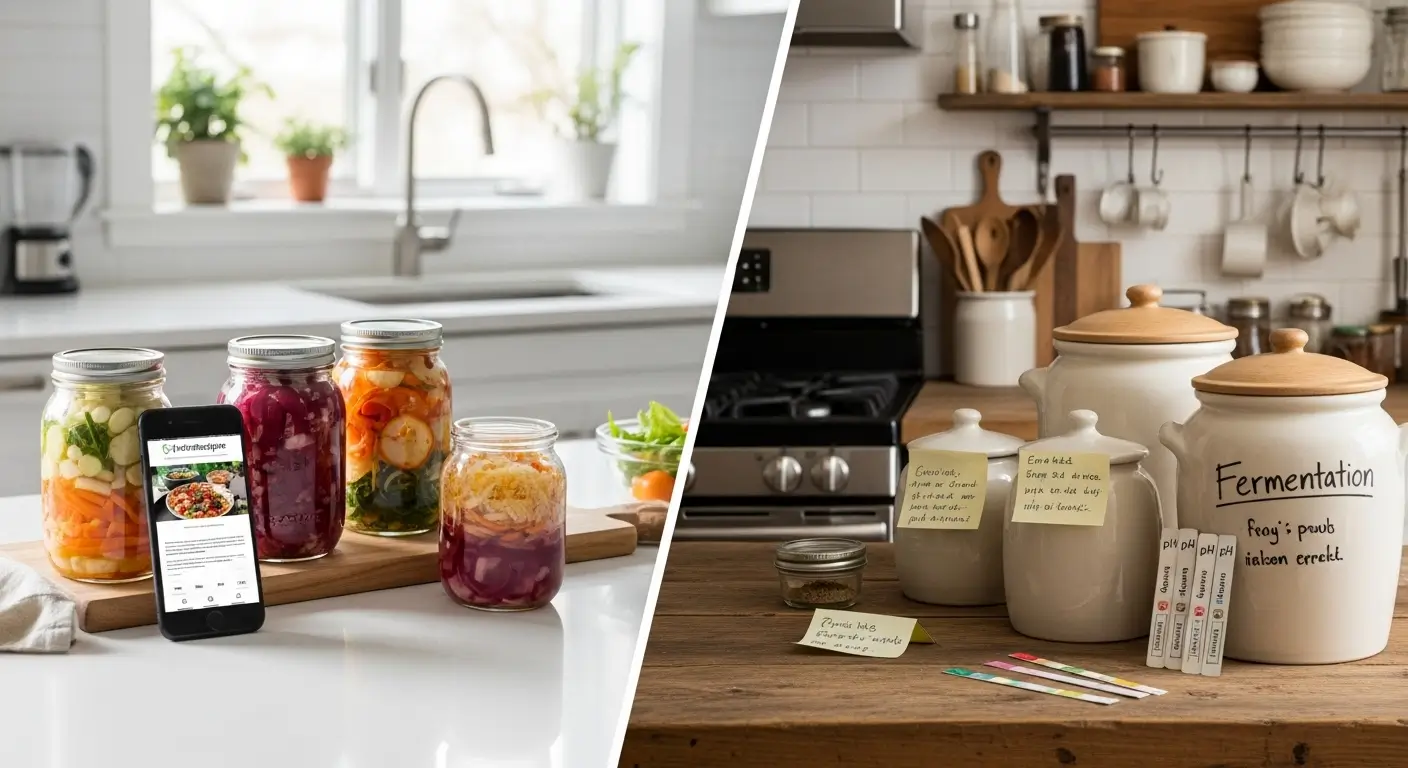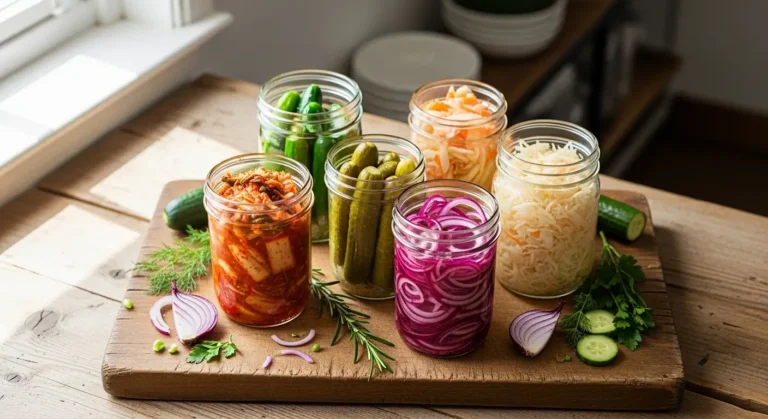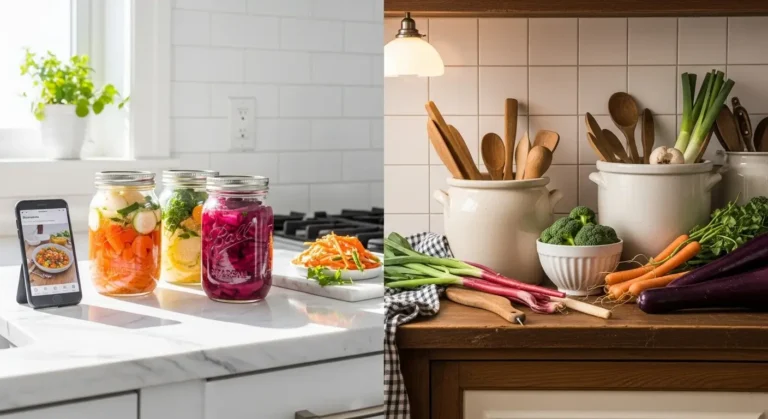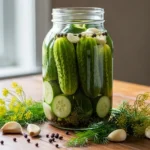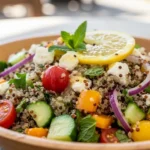So, fermentation’s having a real moment right now, right? Everyone’s suddenly obsessed with gut health and making their own tangy, bubbly stuff at home. And honestly? I get it. There’s something super satisfying about creating your own sauerkraut, yogurt, or kombucha. But here’s the thing – you need good guidance, or you’ll end up with a weird science experiment that goes straight into the trash.
Lucky for us, there are two awesome resources out there: PedroRecipes.com and FermentingForFoodies.com. They’re both great, but they’re totally different vibes. So let me break it down for you so you can figure out which one fits your style – whether you’re just dipping your toes in or ready to go full fermentation nerd.
What Makes Each Site Special?
Pedro Recipes: When You Want It Quick and Easy
Think of Pedro Recipes as your cool friend who makes everything look effortless. It’s all about modern, simplified fermentation for people who’ve got busy lives but still want to eat healthy, delicious stuff. No need for fancy equipment or spending your whole weekend babysitting jars.
What’s really cool about Pedro Recipes is that it focuses on halal-compliant recipes and gets creative with flavors. They’ve got recipes like Fermented Garlic Confit that’s good for your gut – mixing old-school fermentation with ingredients you can actually find at your regular grocery store. Plus, the site looks clean and modern, with photos that walk you through everything so nothing feels overwhelming.
It’s perfect if you want efficiency without cutting corners on taste. Most recipes use ingredients you probably already have and methods that won’t make you feel like you need a PhD in microbiology.
Fermenting For Foodies: For the Science Nerds (In the Best Way)
Now, Fermenting For Foodies is a whole different beast. Founded by Emillie Parrish, who has a background in neuroscience (how cool is that?), this site goes deep. She actually got into fermentation to help with her family’s health issues, and now she’s basically a fermentation guru.
This site’s more like taking a masterclass. It’s super educational and really digs into the science of what’s happening in those jars. Emillie even wrote an award-winning book called “Fermenting Made Simple” and does workshops for people who are serious about this stuff.
What makes it special? Well, instead of shortcuts, Emillie wants you to understand the why behind everything. It’s not just “do this, do that” – you’re actually learning skills that’ll work for any fermentation project you tackle down the road.
How They Actually Teach You
Learning Styles: Pictures vs. Deep Knowledge
Pedro Recipes is perfect for visual learners. Lots of step-by-step photos, encouraging instructions, and fun serving ideas. The posts are quick reads – great for when you’re browsing during your lunch break and want to try something new without going down a research rabbit hole.
Fermenting For Foodies? Get ready for school (but fun school!). Every post starts with the science – talking about pH levels, fermentation processes, and all those friendly bacteria doing their thing. It’s more work upfront, but you’ll actually understand what you’re doing, which means you can fix problems and tweak recipes like a pro.
Their Values and Vibe
Pedro Recipes is all about inclusivity. The halal-compliant approach means no alcohol-based brines or pork products, and they explore flavors from all over the world. It’s welcoming to home cooks from all backgrounds, which I love.
Fermenting For Foodies is more about honoring tradition and heritage. Emillie treats fermentation like both an art and a health practice, connecting you with techniques that have been around for ages. There’s something really cool about feeling connected to how people preserved food centuries ago.
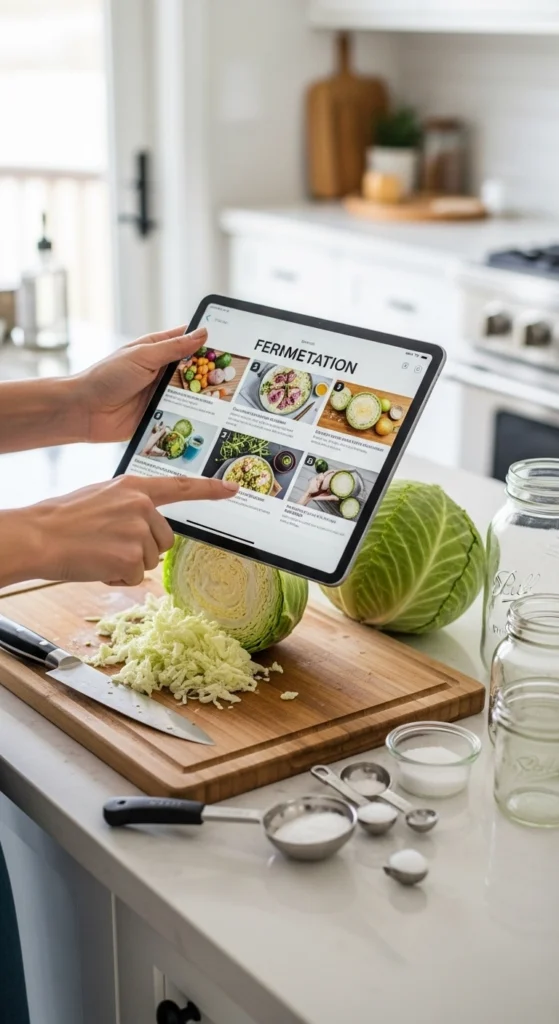
What Actually Using These Sites Is Like
Time and Effort
Pedro Recipes keeps things beginner-friendly. You won’t need a bunch of weird equipment, and the recipes don’t take forever. They’ll suggest things like starter cultures or small batches that give you tasty results pretty quickly. It’s ideal when you’re just testing the waters.
Fermenting For Foodies asks for more patience. The traditional methods usually mean longer fermentation times and paying closer attention to things like temperature. But honestly? The flavors are usually worth it, and you’ll really understand what you’re doing.
When Things Go Wrong
Both sites talk about safety, but differently. Pedro Recipes gives you the essential stuff in bite-sized pieces – like keeping your brine levels right and knowing when something’s gone bad.
Fermenting For Foodies is like having a troubleshooting encyclopedia. Super detailed guides for figuring out what went wrong, understanding pH needs, and handling all those weird issues that can pop up during longer ferments.
Equipment and Methods
What You’ll Need to Buy
Pedro Recipes keeps it simple – stuff you probably already have or can grab easily. The philosophy is “just start” without dropping a ton of money. Mason jars and basic tools? You’re good to go.
Fermenting For Foodies gets into the specialty gear – fermentation crocks, pH strips, fancy airlocks. It’s more of an investment, but if you’re serious about this, that equipment really does make things more consistent.
Fast Track vs. Traditional Route
This is where their philosophies really split. Pedro Recipes embraces modern tricks like starter cultures and temperature control to make things more predictable and faster.
Fermenting For Foodies is team wild fermentation all the way – relying on natural bacteria and just letting things happen at room temp. Takes more skill to master, but you’re connecting with hundreds of years of traditional knowledge.
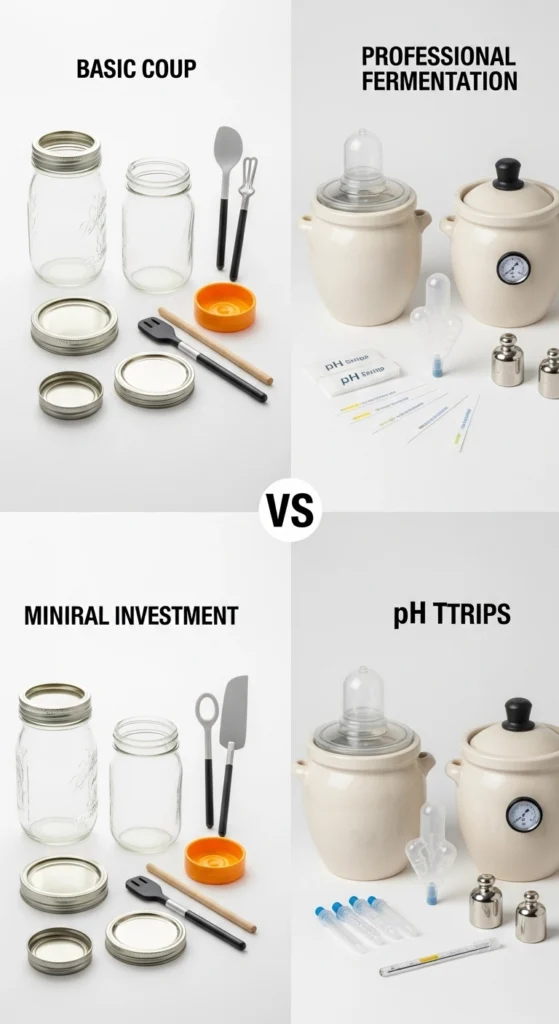
Health Stuff and What You’ll Learn
Both sites know that Fermented Foods are amazing for you – better digestion, nutrient absorption, immune support, all that good stuff. But they present it differently.
Pedro Recipes weaves the health benefits into the recipes naturally. You get the connection between yummy food and wellness without feeling like you’re reading a medical journal.
Fermenting For Foodies goes full science mode. Detailed explanations about bacterial strains, fermentation mechanics, and exactly how these foods help your body. You’ll actually understand the biology behind it all.
The Real Talk: Pros and Cons
What’s Great About Pedro Recipes
- Super approachable – won’t scare you off
- Creative recipes that keep things interesting
- Halal options make it inclusive
- Quick results for us impatient folks
- Clean design that’s easy to navigate
Where Pedro Recipes Falls Short
- Not as deep for serious students
- Fewer traditional or heritage techniques
- Limited help for complex problems
What’s Great About Fermenting For Foodies
- Deep knowledge that makes you an actual expert
- Traditional methods with historical connection
- Amazing troubleshooting resources
- Workshops for ongoing learning
- Expertise from an award-winning author
Where Fermenting For Foodies Falls Short
- Steeper learning curve if you’re new
- Takes more time investment
- Need more equipment and specialty ingredients
Real People, Real Situations
If You’re Busy AF
Meet Sarah – she works full-time, has two kids, and barely has time to breathe. She wants Fermented Foods for her family but needs something simple. Pedro Recipes is perfect with recipes like that garlic confit that’s literally just two ingredients and you can basically ignore it.
If You’re Ready to Go All In
Michael’s been cooking forever and wants to really master traditional fermentation. He’s got the time, he’s got the budget, and he wants authentic flavors. Fermenting For Foodies gives him the scientific depth and traditional techniques to become a true expert.
If Your Family Has Dietary Needs
The Johnsons want better gut health but have dietary restrictions to work around. They use both sites – Pedro Recipes for quick daily recipes and Fermenting For Foodies to understand the science behind why it all works.
Bottom line? Both sites are awesome, just for different people. Want to jump in quickly and have fun? Go with Pedro Recipes. Ready to really learn the craft and go traditional? Fermenting For Foodies is your jam. And hey, there’s no rule saying you can’t use both!
Detailed Comparison Table
| Feature | Pedro Recipes | Fermenting For Foodies |
|---|---|---|
| Founder Background | Digital marketing & food photography | Neuroscience & health journey |
| Teaching Style | Visual, step-by-step, encouraging | Scientific, traditional, comprehensive |
| Recipe Complexity | Beginner-friendly, quick results | Traditional methods, longer processes |
| Equipment Requirements | Minimal household items | Specialized fermentation tools |
| Time Investment | Hours to days | Days to weeks |
| Safety Approach | Essential tips, concise format | Detailed guides, scientific backing |
| Cultural Focus | Modern, globally inspired, halal-compliant | Traditional, ancestral methods |
| Troubleshooting Support | Basic problem-solving | Comprehensive diagnostic guides |
| Learning Curve | Gentle, confidence-building | Steeper but thorough |
| Best For | Busy beginners, visual learners | Serious students, traditional enthusiasts |
So Which One Should You Pick?
If You’re Brand New to This
Honestly? Start with PedroRecipes. It’ll build your confidence without overwhelming you, and you’ll see results fast. Those modern shortcuts help you avoid the typical beginner mistakes that make people give up. Once you’ve nailed a few basic recipes, then you can level up to more challenging stuff.
If You’re Serious About Mastering This
Fermenting For Foodies is where you want to be. You’ll get the scientific foundation you need for advanced stuff – think aged cheeses or really complex vegetable ferments. The detailed safety info and traditional techniques will set you up for success with the tricky projects.
If Your Family Has Dietary Rules
Pedro Recipes is a lifesaver if you’re avoiding alcohol or pork products. The halal-compliant approach means everyone in the family can get in on the fermentation fun. Plus, the creative recipes keep things interesting for everyone.
If You’re All About the Health Benefits
Both sites are great for this, but Fermenting For Foodies goes deeper into how fermentation actually helps your body. You’ll get detailed explanations about beneficial bacteria and the whole biochemistry thing. It’s fascinating stuff if you’re into understanding the science behind your food.
My Final Take (And Some Practical Tips)
Look, this isn’t about picking a “winner” – it’s about figuring out what works for you. Your learning style, how much time you’ve got, and what you want to achieve all matter here.
Go with Pedro Recipes if:
- You want to jump in without reading a textbook first
- You learn best with lots of pictures and step-by-step guidance
- You need halal-compliant or culturally inclusive options
- Your schedule’s packed and you can’t babysit jars for weeks
- You like creative, modern spins on classic recipes
Go with Fermenting For Foodies if:
- You actually want to understand the science (nerd alert!)
- You enjoy slow, traditional methods and don’t mind waiting
- You’re planning to tackle some serious fermentation projects
- You want encyclopedic troubleshooting help
- You’re ready to develop real expertise in this
Here’s my hot take: why not use both? Start with Pedro Recipes to build your confidence and get some basic skills down. Then, when you’re feeling good about it, dive into Fermenting For Foodies for that deeper knowledge and trickier projects.
The real key? Just start. Seriously. Pick one, try a recipe, and see what happens. Whether you go for Pedro Recipes’ quick creativity or Fermenting For Foodies’ traditional depth, you’ll discover how satisfying (and healthy!) home fermentation can be.
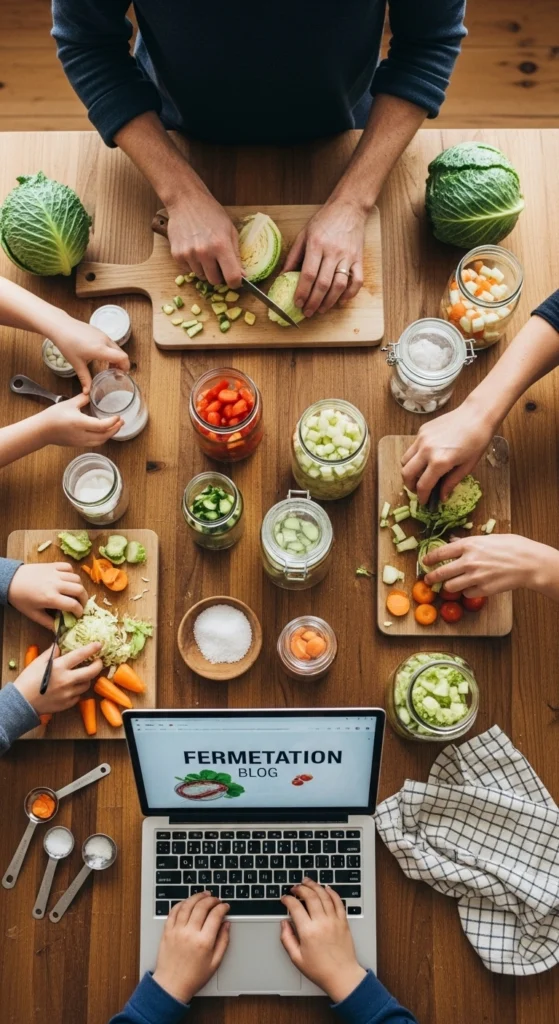
Questions People Always Ask
Do I really need to buy expensive equipment?
Nah, not at all! Pedro Recipes shows you can make awesome Fermented Foods with basic jars and simple tools you probably already own. That said, if you get really into it, the specialized gear from Fermenting For Foodies can make things more consistent and open up new possibilities. But start simple!
How do I know if my ferment went wrong and isn’t safe?
Both sites hammer home the importance of proper pH, keeping your brine levels right, and just looking at your food. Stick with tested recipes from either site, follow the safety rules, and trust your gut (pun intended). Good ferments smell pleasantly tangy and look appetizing – not weird or funky in a bad way.
Which one’s better if I have kids?
Pedro Recipes wins here. The quick, pretty methods are way better for getting kids involved. They get results fast enough to keep their attention, and the creative recipes make healthy food seem actually fun. Trust me, kids don’t want to wait three weeks to see what happens in a jar.
Do I need different sites for different types of fermentation?
Kind of! Both cover lots of ground, but they have their specialties. Pedro Recipes rocks at vegetable ferments and creative applications. Fermenting For Foodies is your go-to for dairy ferments, beverages, and those complex traditional techniques that take some serious skill.
When will I actually feel the health benefits?
Good news – research shows you might notice better digestion within just a few days! But the real gut health changes usually take a few weeks to months of eating Fermented Foods regularly. Both sites make it easy to stick with it because the recipes are actually delicious, not just “good for you.”
Ready to dive in? Whether you’re team quick-and-easy or team traditional-and-thorough, both sites will help you discover how fun (and tasty) making your own Fermented Foods can be. Pick one, grab some jars, and let’s get fermenting!

